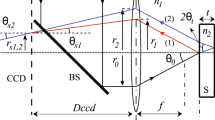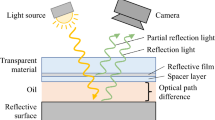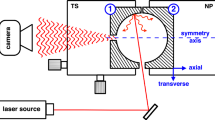Abstract
THE property that liquid surfaces have of indicating level is frequently employed in physical and engineering metrology. Surprisingly little use is made of the property of flatness which, with certain reservations, is possessed by a reasonably extensive liquid surface, which provides a naturally reproducible reference basis. The earth‘s radius of curvature causes the centre of a liquid surface of 25 cm. diameter to project by only 12 A. above the true plane intersecting its perimeter, if the effect of capillary curvature at the boundary region is omitted from consideration.
This is a preview of subscription content, access via your institution
Access options
Subscribe to this journal
Receive 51 print issues and online access
$199.00 per year
only $3.90 per issue
Buy this article
- Purchase on Springer Link
- Instant access to full article PDF
Prices may be subject to local taxes which are calculated during checkout
Similar content being viewed by others
References
Williams, W. E., "Applications of Interferometry", 64 (Methuen, 1948).
Rayleigh, Lord, Proc. Roy. Inst. Lond., 14, 72 (1893): Nature 48, 212 (1893).
Author information
Authors and Affiliations
Rights and permissions
About this article
Cite this article
BARRELL, H., MARRINER, R. Liquid Surface Interferometry. Nature 162, 529–530 (1948). https://doi.org/10.1038/162529a0
Issue Date:
DOI: https://doi.org/10.1038/162529a0
Comments
By submitting a comment you agree to abide by our Terms and Community Guidelines. If you find something abusive or that does not comply with our terms or guidelines please flag it as inappropriate.



